Interview: My Life as a Zucchini‘s Director Claude Barras on Capturing Childhood Tragedy in Stop-Motion
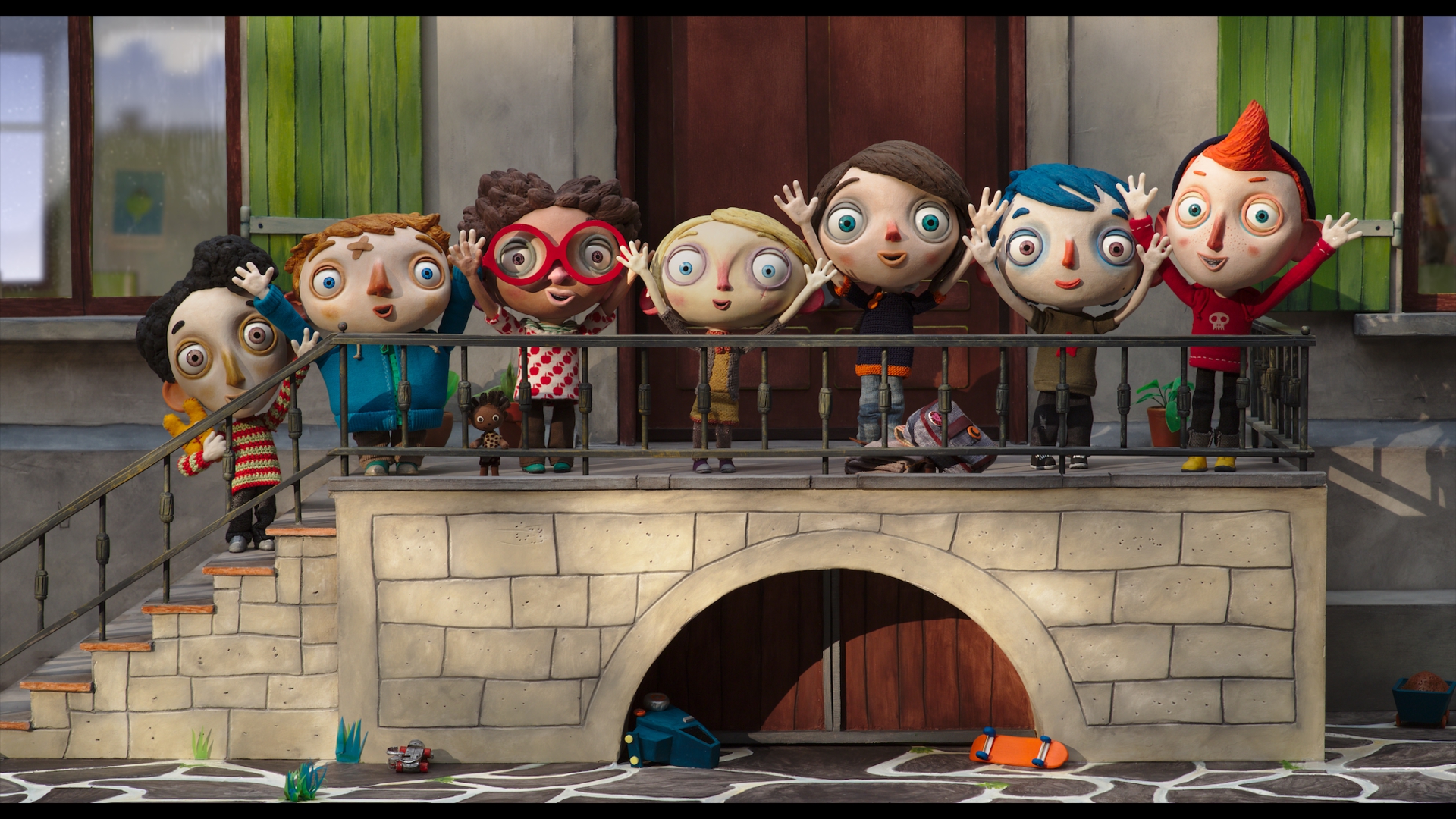
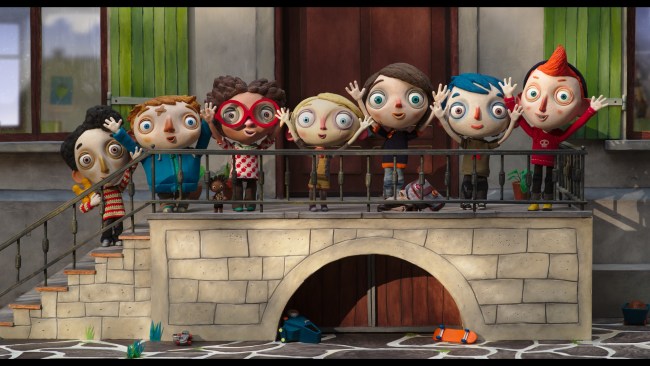
My Life as a Zucchini or Ma vie de Courgette is a gorgeous stop-motion film that absolutely deserves its Oscar nomination. The film is out in the United States February 24th, and I definitely recommend it for viewers of all ages.
In an email interview, director Claude Barras told me about the amazing work that screenwriter Céline Sciamma (director of Girlhood) did on the film, his approach to adapting the original book, and the responsibility of making a children’s movie. The orphans of Zucchini are portrayed with heart, realism, and honesty in a way that I feel like we don’t see often enough. If you enjoy the film, Barras also gives us a number of movies that influence his style, visual sensibility, and more, all of which I’m totally adding to my watch-list.
TMS (Charline): Zucchini’s drawings (and Camille’s to a smaller extent) give us a glimpse into his mind in an interesting way. What was the thought and creation process like behind those drawings?
Claude Barras: Zucchini’s drawings came about in response to the choice to adapt the novel into a film while avoiding a voiceover as much as possible. The novel is written in the first person. In it, Zucchini describes the sometimes very difficult situations he and his friends experience with naiveté, lightness and humor. It’s this quirky language that gives the novel its originality and the drawings are a film translation this language.
Zucchini steps back from the dramas he lives through and escapes from them by drawing. As for the drawings themselves, they were done in collaboration with Olesya Shchukina, a young director with a style very close to the drawings of children. I would give her a theme or a phrase and she would come back with a dozen children’s drawings. All I had to do was to choose the ones I liked the most.
TMS: What were the challenges of adapting the original book and how you did confront them?
Barras: I just told you about an initial challenge, but there were many others. I can cite the impressive number of characters and places in the novel, as well as its episodic aspect. The novel is a chronicle, an accumulation of situations, of memories. A line of attack had to be chosen in order to recreate a strong dramatic arc around the friendship triangle of Zucchini/Camille/Simon and to eliminate a number of wonderful characters and situations in order to arrive at a clear screenplay, one which gives each character their place and the time to exist.
This was also necessary because, with an 8M budget, we did not have the luxury of building more puppets. Another stumbling back was that the book was intended for adults and included explicit or violent elements that had to be transformed in order to retain the drama without shocking the children. Céline Sciamma did remarkable work on all levels.

TMS: Can you tell me about what it was like moving from shorts to this feature film?
Barras: It was smooth. We have a small studio in Lausanne where we produce and direct short films within the Hélium Films collective. It was with this collective that I was able to develop My Life as a Zucchini while simultaneously producing short films by other directors. This production experience really helped me keep My Life as a Zucchini within a budget that was very limited this type of technique.
In comparison with my short films, I worked hard to reach a wide audience because I wanted to transmit My Life as a Zucchini’s message of openness and tolerance to as many as possible. As for the crew, most of the unit heads have worked with me for a decade on our short films and a lot of artistic and technical harmony was in play even before we began our first feature film.
TMS: Were there any prominent influences in My Life as a Zucchini, either in the storytelling or visual style?
Barras: As a child, I grew up with a French stop-motion TV series, Le manège enchanté [The Magic Carousel] by Serge Danot. Early on, I also discovered Jiří Trnka’s The Hand in a program of short films shown on Sunday afternoon TV. These really impressed me and I realize that the simple form in the design of the puppets and in the film comes from these early film experiences.
My taste for melodrama comes from another series I saw as a child: Heidi by Isao Takahata and Hayao Miyazaki. I am also a great admirer of the short films of the duo Catherine Buffat and Jean-Luc Gréco, particularly The Lost Bag, but also Madame Tutli-Putli by Maciek Szczerbowski and Chris Lavis, of The Pearce Sisters by Luis Cook, of L’air de Rien by Cécile Milazzo, of Please Say Something by David O’Reilly, and also of Nick Park’s Creature Comforts.
In animated feature films, I am very influenced by Paul Grimault’s The King and the Mockingbird, Grave of the Fireflies by Isao Takahata, The Nightmare before Christmas by Henry Selick and Tim Burton, Hayao Miyazaki’s Princess Mononoke, Wes Anderson’s Fantastic Mr. Fox, Peter Lord’s Chicken Run and The Wolf Children Ame and Yuki by Mamoru Hosoda.
There are also directors of fiction films that I admire, that spire me a lot and that illustrate my pronounced taste for marginal characters: Freaks by Tod Browning, The 400 Blows by François Truffaut, The Elephant Man by David Lynch, Wings of Desire by Wim Wenders, Dead Man by Jim Jarmusch, Dogville by Lars von Trier, Spider by David Cronenberg, Amores Perros by Alejandro G. Iñárritu, Time of the Wolf by Michael Haneke, The Host by Bong Joon-ho, Old Boy by Park Chan-wook, Children of Men by Alfonso Cuarón, Tomboy by Céline Sciamma, Two Days, One Night by the Dardenne brothers and the very recent and magnificent I, Daniel Blake by Ken Loach.
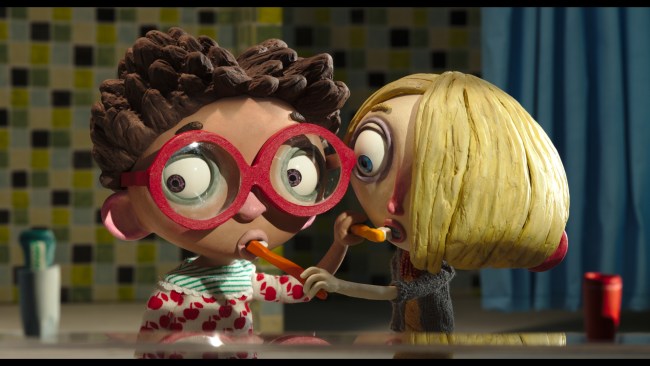
TMS: Do you have a favorite moment in the film, or a character you particularly connect with?
Barras: I really like Simon, because he hides his sensitivity, he is discreet, but deep down he has such a big heart that he is capable of sacrificing his own happiness for that of others. For this reason, my favorite moment, from reading the book, is the moment when Simon overcomes his anger and his feeling of abandonment after having learned that
TMS: What do you think stop-motion did for this story that another medium (CGI, live-action) would not be able to achieve?
Barras: Perhaps a kind of simplicity resulting from the technique and the budget. I think that the very small budget (8M) influenced the directorial choices as much as the stop-motion technique. For me, simplifying is not weakening, but going to the essential. My Life as a Zucchini is a realistic story and I chose to put the realism into the voices, the lighting and the lean production, things that do not cost too much.
For the puppets, I tried to simplify the design as much as possible in order to convey emotions simply while at the same time facilitating the animation work. Their faces are like emoticons, they have such a simple aspect that the emotions rise to the surface with an almost imperceptible movement of an eyelid. This is a very exciting and creative game for the animators.
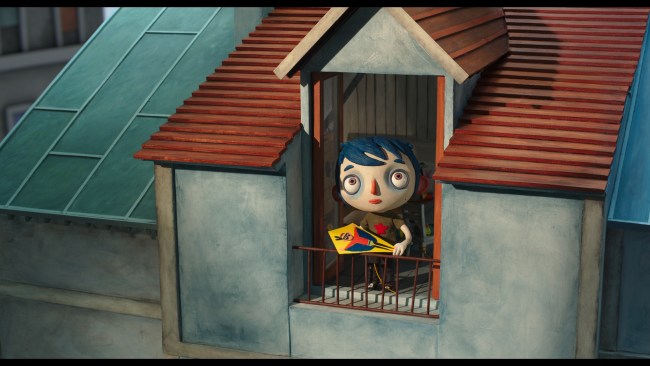
TMS: That credit scene with Gaspard Schlatter was really enjoyable. Were there any other fun behind-the-scenes moments that you’d be willing to share?
Barras: That’s the only one. But there’s a very funny anecdote connected with it that I will explain. It was shot four years before the film, in 2009, and it is not Gaspard Schlatter, but Paulin Jacquoud, who is the voice of Zucchini for this casting. At the time, Robert Boner, the producer who was responsible for development, challenged me to prove to him the relevance of a film for children that speaks of abuse using puppets with overdeveloped heads. Taking Creature Comforts and the casting of Jean-Pierre Léaud for The 400 Blows as my inspiration, I imagined this casting of Zucchini.
Robert Boner was convinced but he retired in 2010 and passed the torch to Rita Production which, with this pilot film, quickly secured the financing for a Swiss-French coproduction. We recorded the voices at the end of 2013, but Paulin had grown up and no longer corresponded in any way to the role of Zucchini. He was sad and Marie-Eve Hildbrand (who had supervised all stages of the voice work, from casting to editing and including directing the actors) had the idea of having him play Simon and suggested to Gaspard Schlatter that he take over the role of Zucchini. We were all very relieved from the first tests.
TMS: I feel like a lot of films don’t always portray children accurately, writing them as too adult or simple and one-dimensional. I loved that Zucchini painted a multidimensional look at the childhood of kids with very tragic backgrounds. What was your approach to this and do you see Zucchini as a unique movie in that aspect?
Barras: No, I was very inspired by films such as Grave of the Fireflies by Isao Takahata or, more recently, The Wolf Children Ame and Yuki by Mamoru Hosoda. It is appropriate for melodramas to portray childhood sufferings, but it is true that this is not a genre that is very fashionable. The book Autobiography of a Zucchini is a rather amusing monologue that talks about sad things by shedding light on them. That is also what childhood is, fits of laughter and inconsolable sadness. But to render this realistic story cinematographically is no small matter.
Morgan Navorro, a friend who writes books for young people and who has a very good dialogue sense helped me at a certain point, but it is Céline Sciamma who finally found how to mix humor and sadness with lots of tenderness and empathy. The key, she says, is to manage to think like a child and not to wonder how children speak. That is the screenplay’s great success, this jumble of childish emotions. We laugh in the sad scenes and cry in the happy ones.
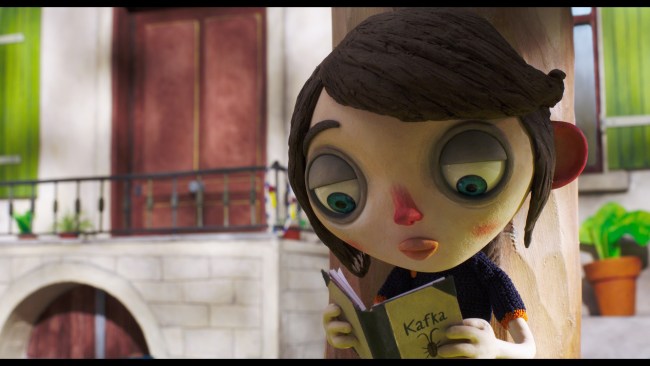
TMS: More broadly, how should creators address these very serious topics in a children’s movie?
Barras: When Céline had me read the final screenplay, I realized that I was holding a very beautiful story in my hands and at that moment I felt great excitement mixed with great responsibility. That is what I think must guide us when we make a film intended for children, irrespective of its genre, a form of responsibility to these beings who are our future and to whom we transmit our values.
Want more stories like this? Become a subscriber and support the site!
—The Mary Sue has a strict comment policy that forbids, but is not limited to, personal insults toward anyone, hate speech, and trolling.—
Follow The Mary Sue on Twitter, Facebook, Tumblr, Pinterest, & Google+.
Have a tip we should know? [email protected]